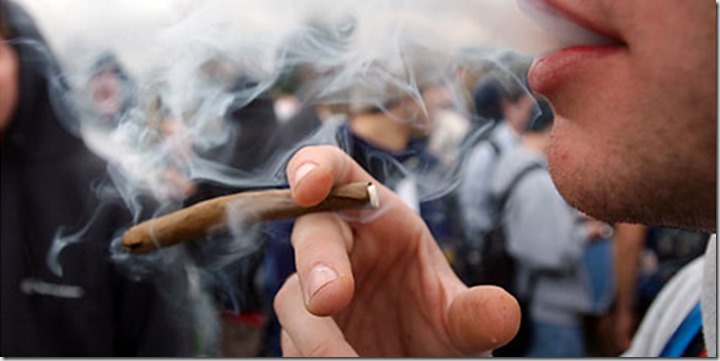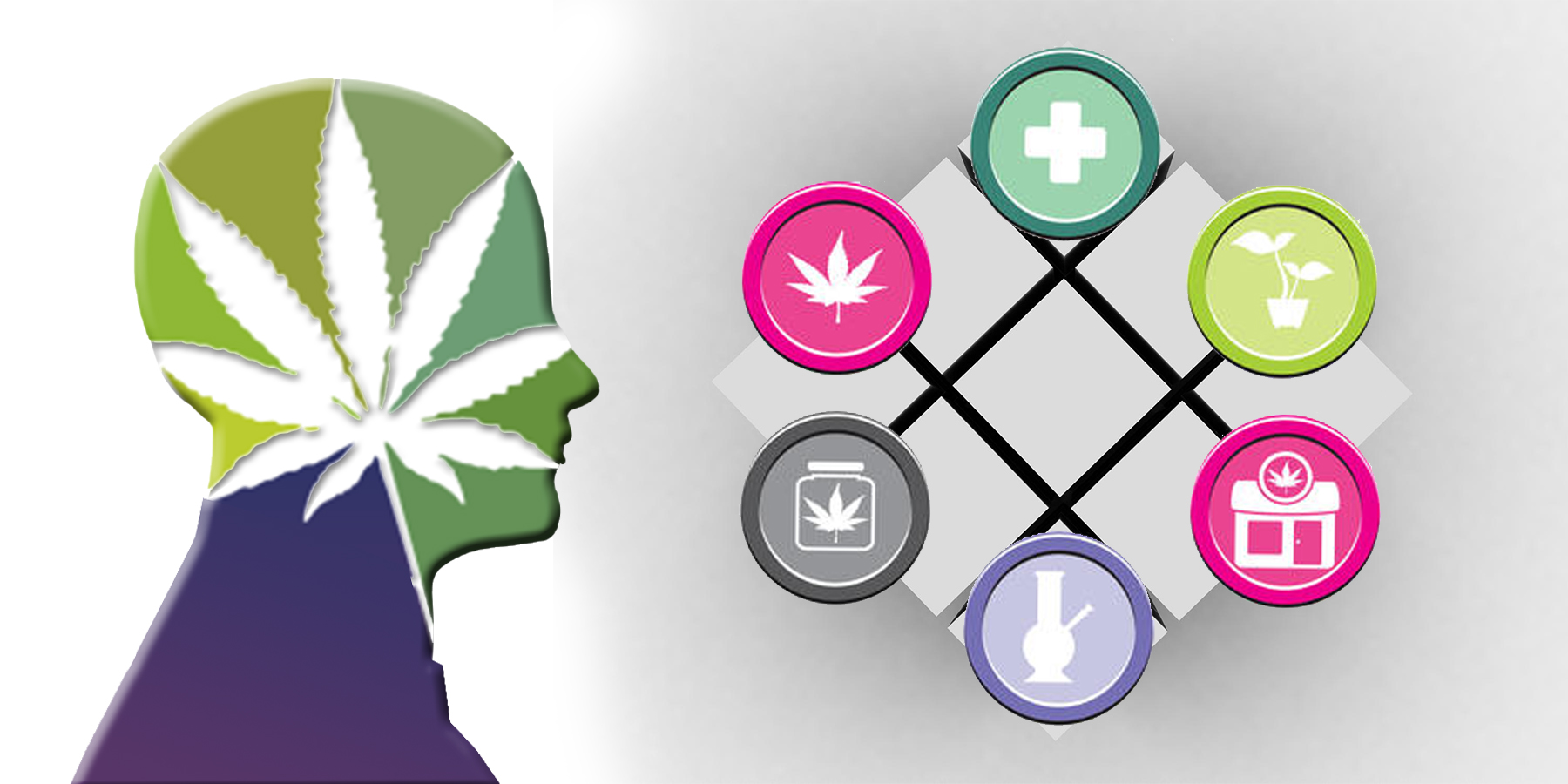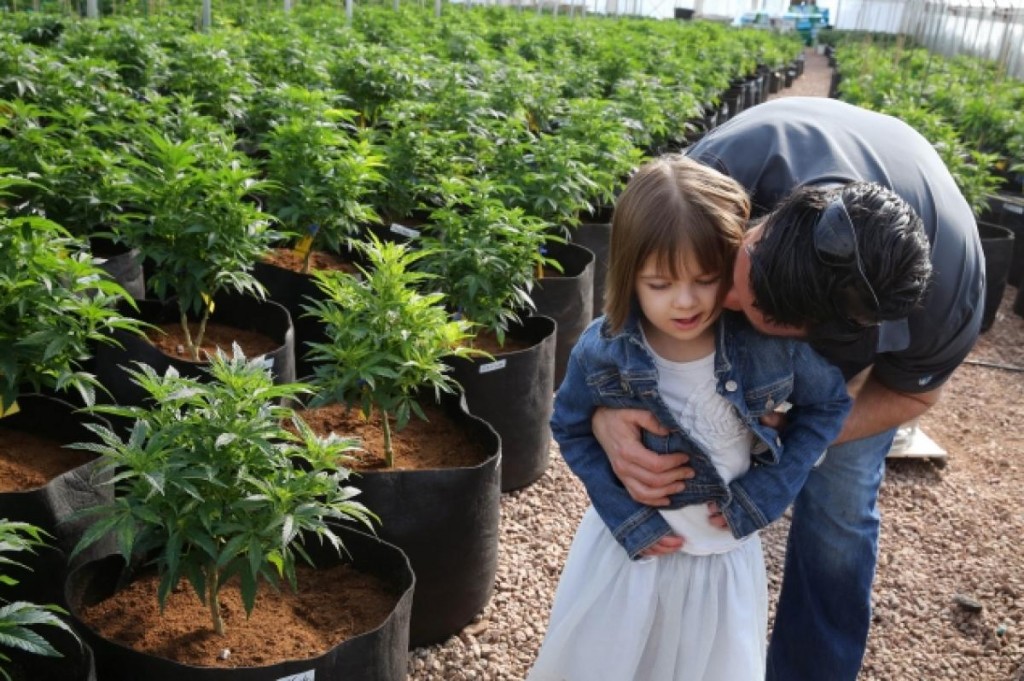
Brennan Linsley/AP
Cannabis being used successfully to treat a myriad of ailments in kids
When it comes to cannabis prohibition, you’ll often hear the words, “What about the children?” I ask, yes, what about the children? If the research was done, would children benefit? Would they be restricted to pharmaceutical mediations, or would they also be allowed to take alternatives made with cannabis?
To many people, giving children cannabis is unthinkable. Why? Because we’ve always been told that it’s dangerous for adults, so one would assume that for children, it would almost be life-threatening. Many times these concerns are caused by fear of the unknown. Why is this? Because the prohibition of cannabis basically forbids it from being researched?
Many people believe that this is unacceptable, and many are moving forward with using cannabis as a medicine, no matter what the governments are saying. I base this only on the sheer numbers of people who are now getting involved. They are looking at the anecdotal evidence as proof that cannabis medicine works and have ignored what they are being told by authority. Instead, they believe the evidence that they see before their eyes, which governments cannot or will not believe.
When it comes to children and cannabis, the biggest concerns seem to be about the development of the child’s brain. But while people worry about that, they don’t seem to be worried about a medicine those label says one of its side effects is death. So why it is acceptable to give a child a man-made drug that can kill them, but it’s not okay to give them a plant that hasn’t killed anyone?
The American Academy of Pediatrics opposes the use of marijuana to treat young children, citing its addictive potential and the many unknowns about how it may affect developing bodies. But could the same be true for other medications used to fight pain and nausea, that are currently given to children with cancer, as well as for powerful antipsychotic drugs that are used in long-term treatment of childhood mental illnesses? Opiate drugs like morphine and OxyContin, which are sometimes used to treat the severe pain that accompanies life-threatening cancer and other diseases, can lead to overdoses. They can also lead to addiction, vomiting, drowsiness, constipation, or respiratory depression.
The most-used method for fighting cancer is chemotherapy, which not only kills bad cells but also attacks good ones. Unfortunately, it doesn’t work all the time. Chemo can cause people to suffer from bone marrow suppression, nausea, loss of appetite, hair loss, organ damage, and more.
Some researchers have talked about what happens to the development of the white matter in the child’s brain, and say that consuming cannabis has shown some disruption in how it grows. They also state that those who start smoking cannabis at an early age tend to be slower at completing tasks, have a lower IQ, and have a higher risk of stroke. There is a concern that it prevents the development of natural occurring endo-cannabiniods. But if parents are talking about a resin or oil, who’s talking about having children smoke cannabis?
The Canadian Medical Association’s website states that they do not support medical marijuana because of the lack of research and data. Some experts point out that not all of marijuana’s components, and their effects on the body, have been studied or well understood. The decision by governments around the world to not properly research this plant could, and I believe is, allowing many people to die. It’s also unfortunate that they haven’t researched or studied some of the Canadian cannabis patients during the years of the MMAR.
Some believe the government knows the research but refuses to share it with people. If they didn’t know of its benefits, why would the U.S. have a patent on some of the cananbinoids? People have known about THC for a long time, but the new cannabinoid on the block is CBD. While everyone knows that THC causes the euphoric feeling behind cannabis, many are learning that CBD decreases that feeling, on top of the many medicinal benefits it brings. This would include the anti-epileptic, anti-spasmodic, anti-cancer, and anti-psychotic benefits it is known to have. With these discoveries happening, one can only hope something positive will come of them.
While medicinal cannabis has been used by adults legally for years, we have rarely seen it used to treat kids. That was until CNN’s Dr. Gupta aired a program on Charlotte Figi, showing how much of a positive effect it had on this young child. Millions of viewers watched and keep watching the remarkable improvement in Charlotte. At one time, she was having 300 grand mal seizures a week due to a rare form of epilepsy called Dravet Syndrome. This is now down to a couple per month because of cannabis resin. The condition usually claims its victims at a young age. Some of the seizures it causes can last for hours, but it only takes five minutes for them to start causing damage to a child’s developing brain. Since this program first aired, it seems the idea of using cannabis to treat our children for medical purposes isn’t as taboo as it once was.
Other children have been fighting for their right to use this medication.
Years before the Dr. Gupta show, there were already children using cannabis for medical purposes. One of them is Storm, who I had heard about several years ago. Storm is the son of Georgia and Norm Peschel, who found themselves and Storm in a constant battle—a battle that would wear down any parent. This battle was against Multiple Synostosis Syndrome, a medical condition that causes bones to fuse together. After enduring several years of Storm crying in pain, the family finally found the relief they were looking for. This happened when Storm was fourteen, and his parents decided to give him cannabis. Georgia writes that this was not an easy decision, but she had done her homework on how it could help him. The only thing she wishes she knew more about was the use of medibles. When they first approached Storm with the idea of using cannabis, he told them he didn’t do drugs, but agreed to try it. What they found was that the pain relief was almost instant—something he had never experienced in his life. With the assistance of their supporting doctor, Storm became one of the youngest patients to be enrolled in Canada’s medical marijuana program. To learn more about Storm and what him and his parents went through, please go to <www.georgiatoons.com/uploads/4/1/0/5/4105506/stormsstory.pdf>
Next, I met on a seven-year-old boy that I read about in a book called Jeffrey’s Journey. It was written by his mom, Debbie, about what the family went through with Jeffrey, who she describes as a violent child. During the early stages of his life, Jeffery was diagnosed with possible ADHD, bipolar disorder, and a possible intermittent explosive or conduct disorder. His mother talked about the first time she gave him some of a muffin that was infused with cannabis. Because Jeffery was so violent, she says, he would grip her hand while she drove. But the morning she fed him that muffin, within thirty minutes, he let go of her hand and said, “Hey mommy, my head isn’t so noisy.” Up until this time, Jeffrey had no friends and really no schooling due to his disruptive and violent behaviour, but cannabis changed that. At the age of eight, he had his first birthday party where the kids actually stayed, and he was able to have some friends. His mother says that the cannabis helped to keep him calm and to control his anger. Once Child Services found out what was happening, it landed them in court. In the end, the judge apologized to the family for what they had been through, saying he supported them and their effort. To learn more about Jeffery, please go to <www.youtube.com/watch?v=4XM_TdmQ9lM>
Jeffery wasn’t alone when it came to fighting inner demons with cannabis. Enter Joey Perez, a young boy who at the age of sixteen months was diagnosed with autism. The support group’s website that his mother Mieko created (www.uf4a.org) states that by the time he was of nine years of age, Joey was having problems regarding his ability to focus. He weighed 46 pounds and had begun to deteriorate because he was refusing to eat and was unable to properly digest food. Because of this, his medical prognosis at that time was, “high probability of death within six months”. But this was before he began taking his cannabis medication. I’m happy to write that Joey did not pass on, and that they have reported, “at age 14, Joey is flourishing with new communicative expressions, he’s gained over 98 lbs, and he’s happier, healthier, better behaved and is more productive than ever before”. A study done by Thomas Sudhof, a cellular physiologist at Stanford University, states that they “tested mutations associated with autism in mice. Two mutations associated with autism in a synapse-adhesion protein led to deficits in prolonged endocannabinoid signaling in mice. This suggests that autism could be caused by a disruption of the brain’s ability to send clear signals.” To learn more about Joey and his mother’s group, please go to <www.uf4a.org/>
Over the last year, a teenager by the name of Noah Kirkman began to use medicinal cannabis. You may recognize the last name, as Noah is the son of
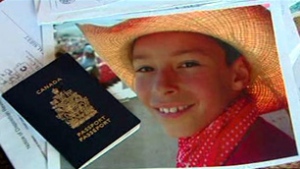
Canadian cannabis writer and advocate Lisa Kirkman. Throughout his life, Noah has had to deal with health conditions such as Tourette Syndrome and Attention Deficit Disorder. Noah is fifteen years of age, so there are the same concerns for him as with any young person. How does this medication help him? He says that cannabis medication that he consumes through a vaporizer “helps me keep calm; it helps me keep focused.” Throughout my years as an advocate, I don’t know how many times I hear this from people diagnosed with ADD, who still deal with it as adults. Because Noah requires his medication throughout the school day, the school board has granted him permission to vaporize his cannabis medication within the vice-principal’s office. To learn more about Noah, go to <metronews.ca/news/edmonton/900291/student-using-medicinal-marijuana-vaporizer-inside-calgary-high-school/>
Young Mykayla Comstock is a seven-year-old suffering from acute Lymphoblastic Leukemia. Her mother is a supporter of medical marijuana, so she was aware of its benefits. When they started to notice that the chemotherapy wasn’t being very
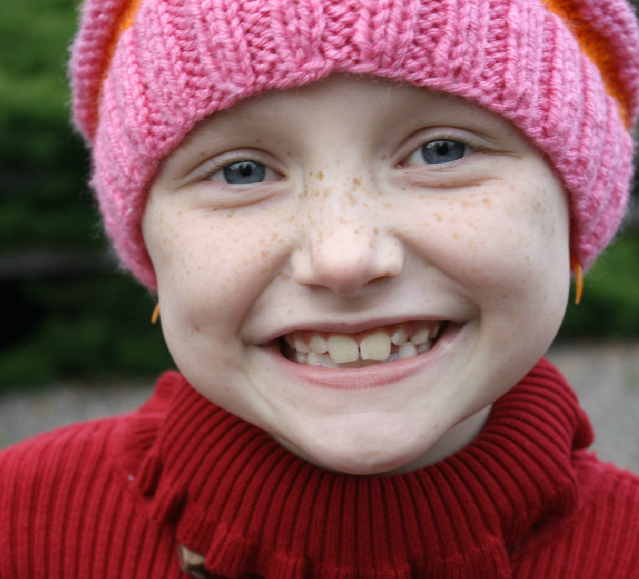
effective, she started to give Mykayla a gram of cannabis oil on a daily basis. She did this with the use of lime-flavoured capsules and without her doctor’s permission. A month after she started on the capsules, they were preparing Mykayla for a bone marrow transplant when they found out she had gone into remission. Although they have received this good news, they continued the cannabis resin treatments throughout her chemotherapy treatment. <www.cnn.com/2012/11/30/health/medical-marijuana-children-time/index.html>
Not only are people from the U.S. moving to Colorado for this medicine, but they are also coming from Canada, a country with its own medical marijuana program. One of the several problems that families have run into is how their children can get the strain that Charlotte Figi uses when they live in a different country or state. Presently, the only answer is to move the whole family to where the medication is legal. For Canadians Barry and Shannon Pogson, there was no choice but to do just that. They moved their 13-month-old daughter Kaitlyn, who has the same rare and serious seizure condition as Charlotte, to this state in another country. Her father reported that after the first week of treatment with cannabinoid oil that Kaitlyn was “more alert, slept better, and hasn’t had to return to [the ER] for seizures.” The news of this helped them launch a petition to get this same cannabis medication made available in countries such as Canada. For more information on the petition that was shared by the Epilepsy Ontario Organization, <epilepsyontario.org/petition-launched-to-begin-cbd-trials-in-canada-3/> To learn more about Kaitlyn and her story please go to <www.cbc.ca/news/health/medical-marijuana-sought-for-children-with-seizures-1.2432653>
Where do we go from here? And what does the future hold for the young patients that need this medication? Is there a chance that it will become legal for all people, and not just those who are old enough? I’ve learned mothers are forming groups and speaking to their legislators to make change in the laws regarding cannabis. They are speaking the truth, and are requesting that this medication be available for their children. And why shouldn’t they be? Cannabis is the least toxic medication that anyone can take.
As I said before, what about the children? Shouldn’t we legalize it for them? If we can determine after a week of trials that H1N1 vaccination is okay for human use, why is it that after almost 100 years , it is so difficult to find out how cannabis can save lives? When you think about it, it really is a crime.
By Al Graham



